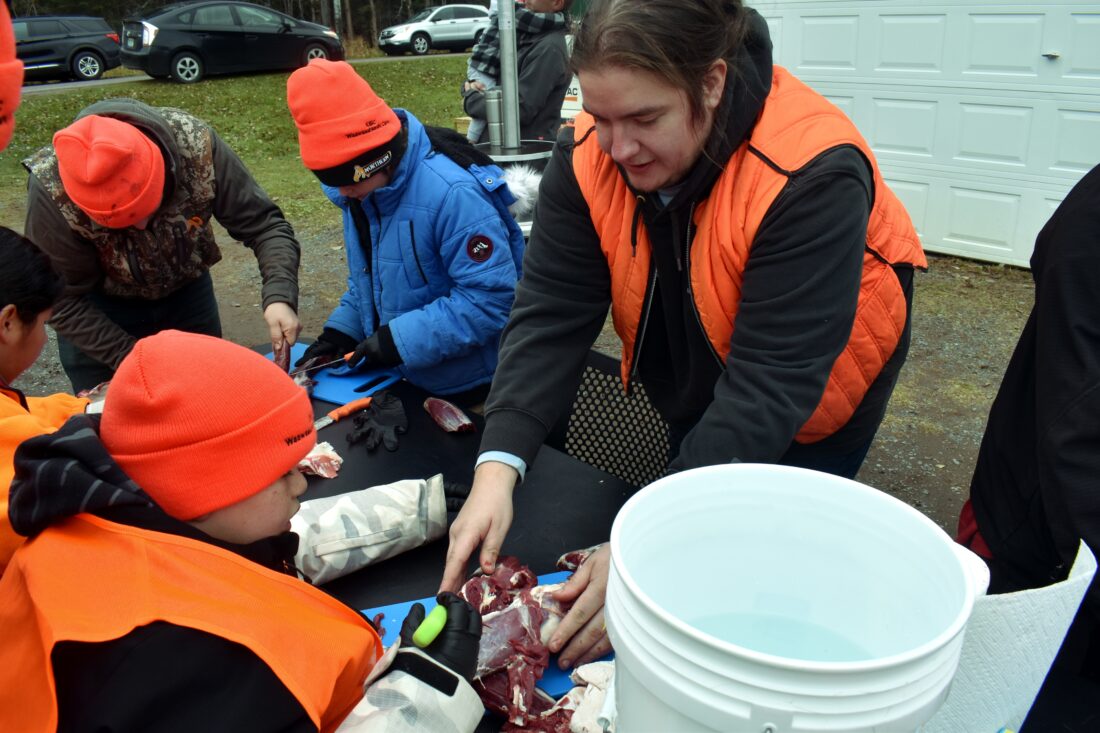Venison, a healthy alternative
And it's Deer Season!

Ben Garbacz/Daily Mining Gazette KBIC Natural Resources Outreach Coordinator Austin Ayres teaches a camp participant how to properly cut venison at the annual Waawaashkeshi last Saturday.
As more consumers look for healthier and more sustainable sources of protein, venison — the meat from deer — is seeing a resurgence on dinner tables and restaurant menus across the country. Nutritionists, chefs, and environmental advocates alike are touting its advantages over traditional red meats such as beef and pork.
A Leaner, Protein-Rich Option
One of venison’s most notable benefits is its nutritional profile. Naturally lean and high in protein, venison offers a nutrient-dense alternative to fattier meats. According to the U.S. Department of Agriculture, a 3-ounce serving of venison contains around 130 calories and just 2 grams of fat, compared to beef’s 230 calories and 15 grams of fat in the same serving.
“Venison is a great choice for people looking to reduce saturated fat without sacrificing flavor or protein,” says Dr. Karen Fields, a registered dietitian. “It’s also rich in iron, zinc, and B vitamins, which are vital for energy metabolism and immune health.”
Sustainable and Ethical Sourcing
Venison is also gaining attention as an environmentally friendly option. Wild venison comes from deer populations that are carefully managed to maintain ecological balance, reducing the environmental impact associated with large-scale livestock farming.
“Harvesting deer helps prevent overpopulation, which can lead to habitat degradation and crop damage,” explains wildlife biologist James Porter. “It’s one of the few meats where consumption can actually contribute to ecological sustainability.”
In addition, many farms raising deer for venison use free-range, grass-fed methods, minimizing the use of antibiotics and hormones.
A Culinary Favorite
Beyond health and sustainability, venison has won the hearts of chefs for its distinctive flavor — often described as rich, earthy, and slightly sweet. It can be prepared in a variety of ways, from hearty stews and roasts to gourmet burgers and tenderloins.
“Venison is incredibly versatile,” says Chef Lina Morales of The Green Table, a farm-to-fork restaurant in Vermont. “Its lean nature means it cooks quickly, and when prepared properly, it’s tender and full of character.”
A Growing Market
With rising consumer interest, venison sales are expected to increase steadily over the next few years. Specialty butchers, online meat suppliers, and even mainstream grocery stores are expanding their venison offerings, catering to a growing audience of health-conscious and eco-minded eaters.
As awareness spreads, experts say venison could become a key player in the future of sustainable eating — combining nutritional benefits, environmental responsibility, and culinary appeal in one naturally wild package.
